Weaving
Yarn rewinding, twisting & fancy twisting
Yarn rewinding and twisting are two important procedure before weaving process. This process also helps to make the yarn more uniform in terms of thickness and density, which is important for producing high-quality fabrics. Yarn twisting, on the other hand, is done to give the yarn more strength and elasticity. Twisted yarns are commonly used for heavy fabrics that are woven for furniture upholstery.
To prepare yarns for dyeing, it is necessary to rewind the yarn from original cone to special cones, soft winded. The new cone has a larger surface area, which allows for better penetration of the dye and ensures that the yarn is evenly dyed.
Our range of linen fabrics includes not only plain weaves but also fabrics with fancy yarns, which we twist on our fancy twisting machine. Fancy yarns are produced by twisting together two or more different types of yarns. Fancy yarns are characterized by their irregular or decorative features, such as knots, loops, or curls. Some examples of our fabrics with fancy yarns include bouclé (loop yarn), flamme (slub yarn), yarn twisted with metallized yarn and mouline yarns.
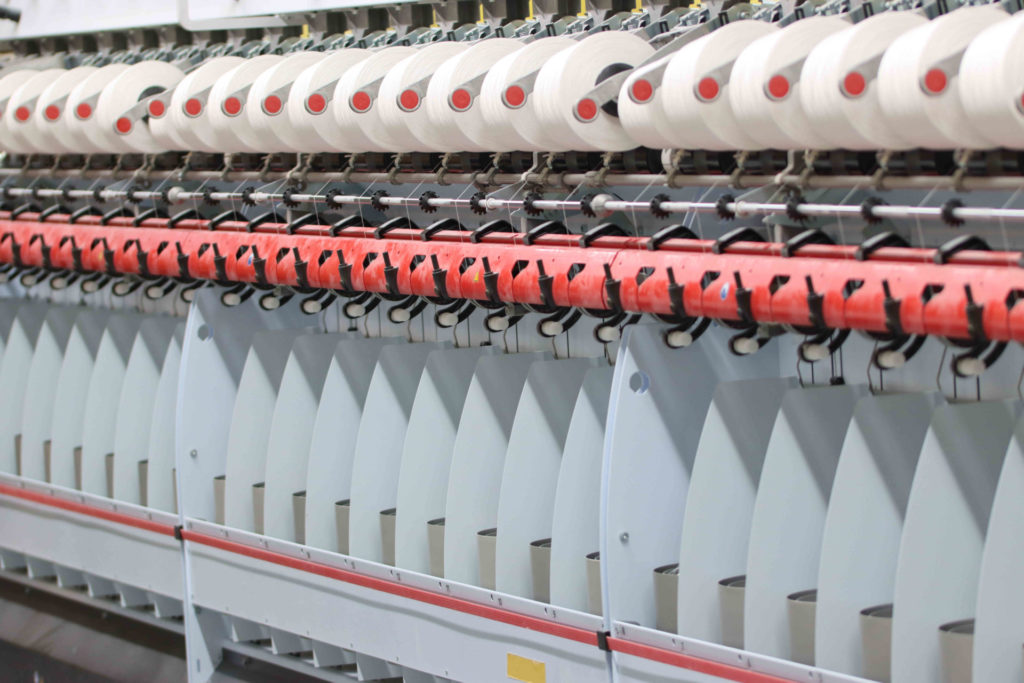
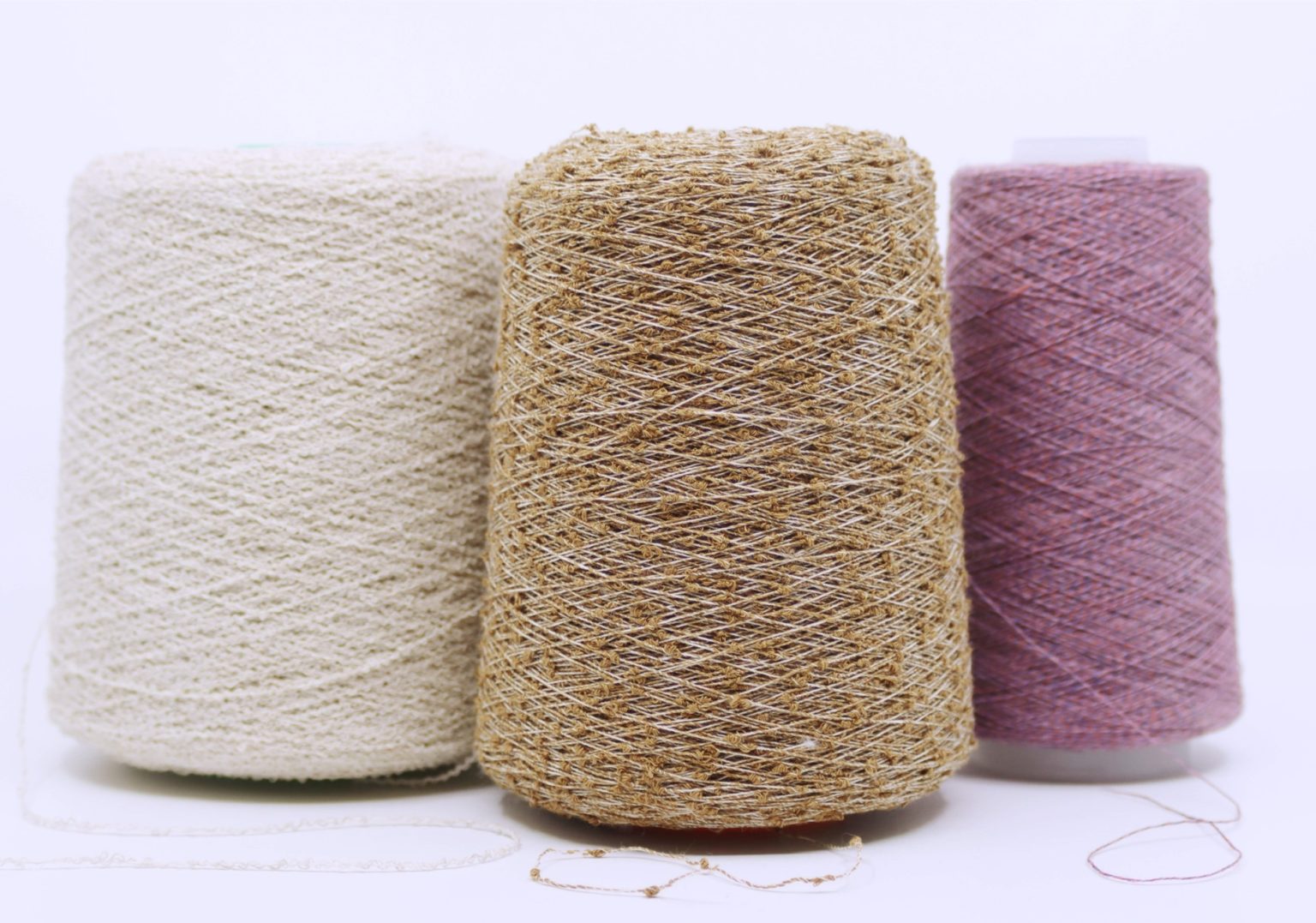
Weaving preparation (warping and threading)
Weaving preparation, also known as warping, is the process of winding the required length of yarn from spools onto a beam to create a warp for the weaving process. The first step in warping is to determine the number of threads required for the warp, which depends on the desired fabric construction and width. If stripes or check patterns are desired, this calculation becomes more complicated because each stripe or block of color requires a different set of threads. In this case, it is necessary to calculate the number of threads needed for each stripe or block separately and then add them together to get the total number of threads needed. Once the number of threads has been determined, the next step is to place the required yarn on the creel. The creel is positioned at one end of the warping machine, and the yarn from each spool is threaded through individual guides and tensioners before being wound onto the warping beam. This process ensures that each thread is under constant tension, which is essential for creating a uniform and high-quality warp.
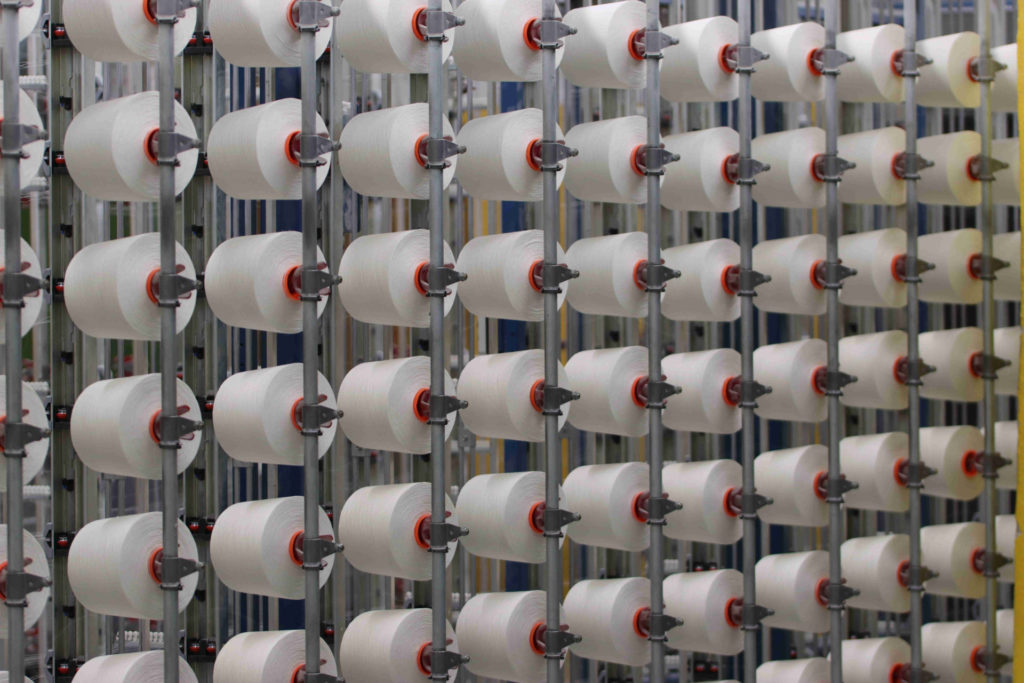
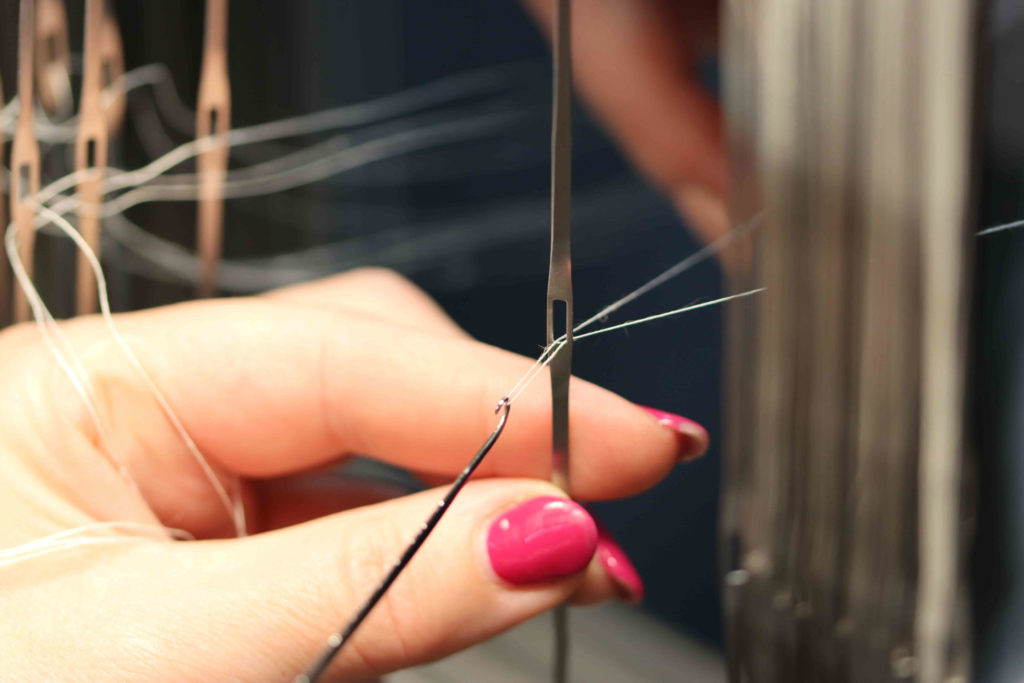
Threading a loom is a crucial step in the process of weaving fabric. The process involves passing a thread through the eye of each heddle on the shafts of the loom. The heddles are responsible for lifting and lowering the warp threads, creating an opening called the shed through which the weft thread can be passed. Threading the loom creates the warp of the fabric, which is the set of vertical threads that will be interlaced with horizontal threads called weft during weaving.
Threading a loom can be a time-consuming and intricate process, as each thread must be passed through its own heddle in a specific order to create the desired pattern. The pattern can be created by varying the order in which the threads are threaded, or by using different colored threads.
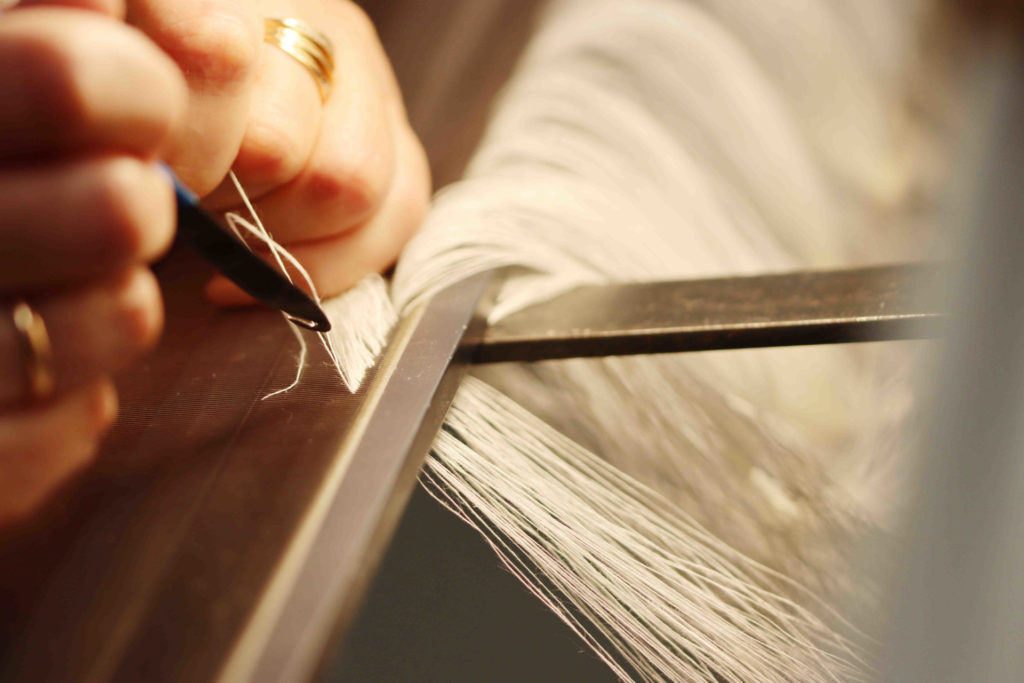
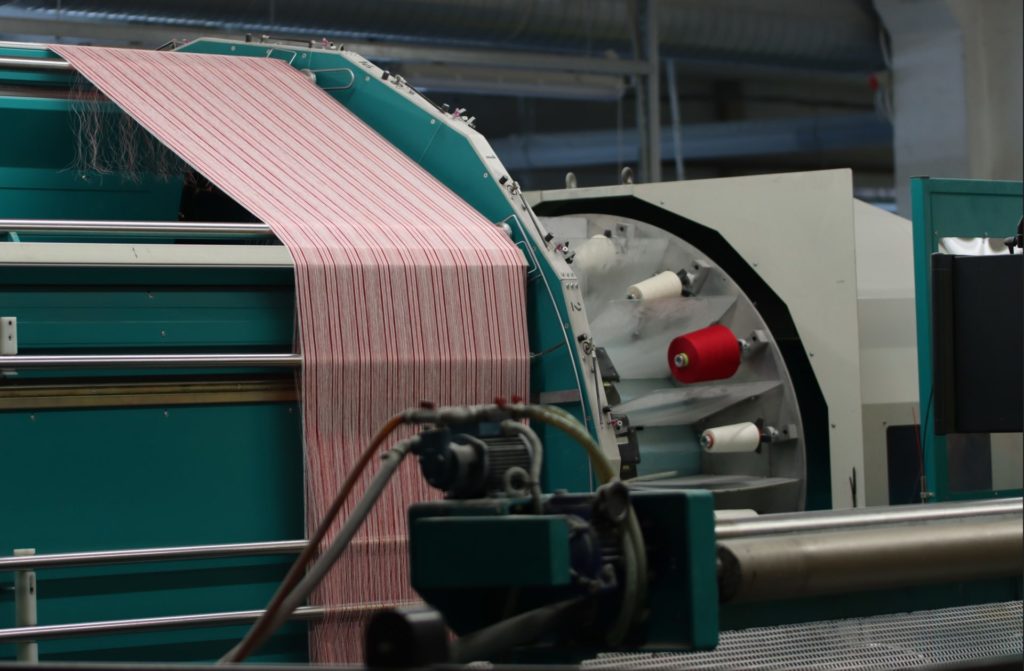

Weaving process
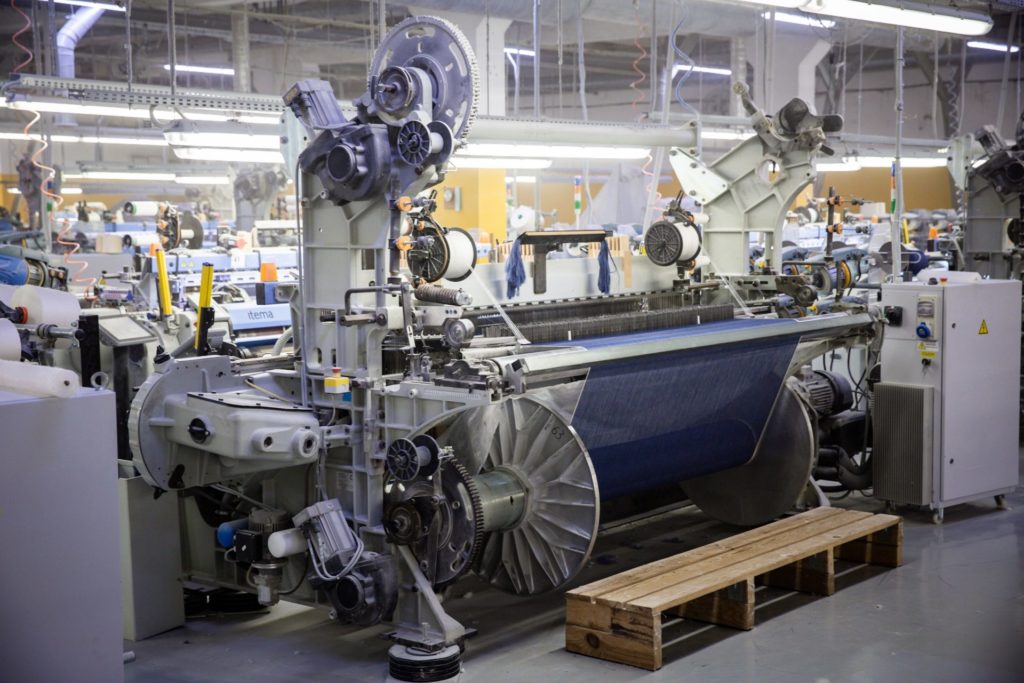
Weaving is a textile production process that involves interlacing two sets of yarns at right angles to each other. The longitudinal threads are called the warp and the lateral threads are called the weft. The warp threads are held in tension on a frame or loom, while the weft is woven through them.
„Klasikinė tekstilė“ company specializes in weaving linen and linen blend fabrics from natural fibers (such as hemp and cotton). Our fabrics have a width of 140-300 cm and are made using modern rapier looms. The weight of the fabric is determined by the weight of the yarns used in the weaving process and density. This weight is measured in grams per square meter (g/m2). The range of weight that we can weave varies from 80 g/m2 to 800 g/m2. Weaving production capacity 250.000-300.000 m2/month.
Linen weaving is a complex and intricate process that requires skill, patience, and attention to detail. In the weaving department, conditioning is a critical process that ensures the yarn is in the best possible state for weaving. Conditioning involves subjecting the yarn to a controlled environment of temperature and humidity for a specific period. The primary objective of conditioning is to improve the yarn’s performance during weaving. When yarn is not conditioned correctly, it can cause problems such as breakages, uneven tension, and poor quality fabric. The resulting fabric is a beautiful and versatile material that has been prized for centuries for its strength, durability, and natural beauty.
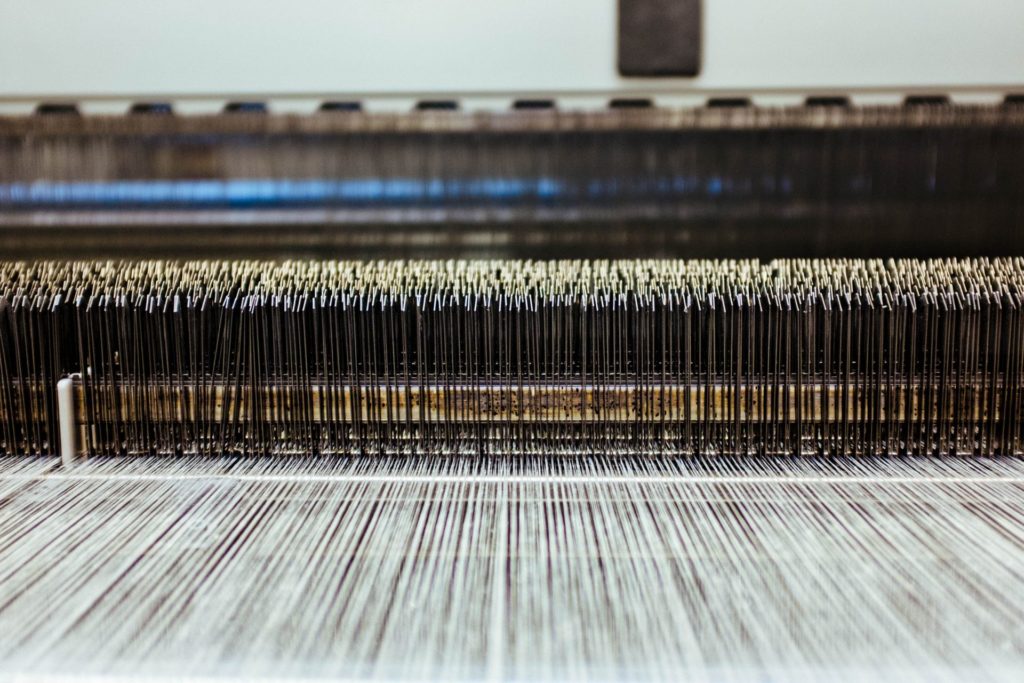
Mending, quality control
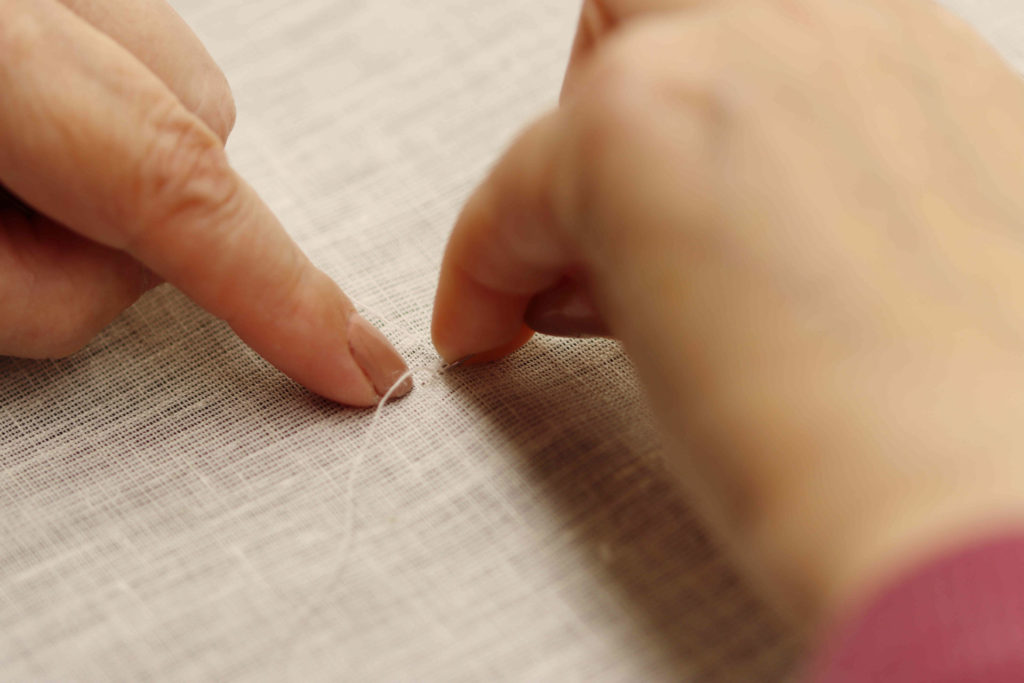
During the weaving process, various factors can cause damages or imperfections on the fabric. For instance, broken warp or weft threads, knots, snags, or holes can occur during weaving. These damages can affect the overall quality of the fabric and may lead to customer complaints or rejection of the final product. Therefore, it is essential to identify and repair these defects before they become more significant issues.
Mending is the process of repairing any damages or imperfections in the fabric. It is important to mend linen fabrics as soon as possible to prevent further damage and extend their lifespan. In our weaving department, mending is an essential part of quality control. Each roll of linen fabric taken from the loom is carefully checked for any damages or imperfections and mended before it is trasnfered to our finishing department.
